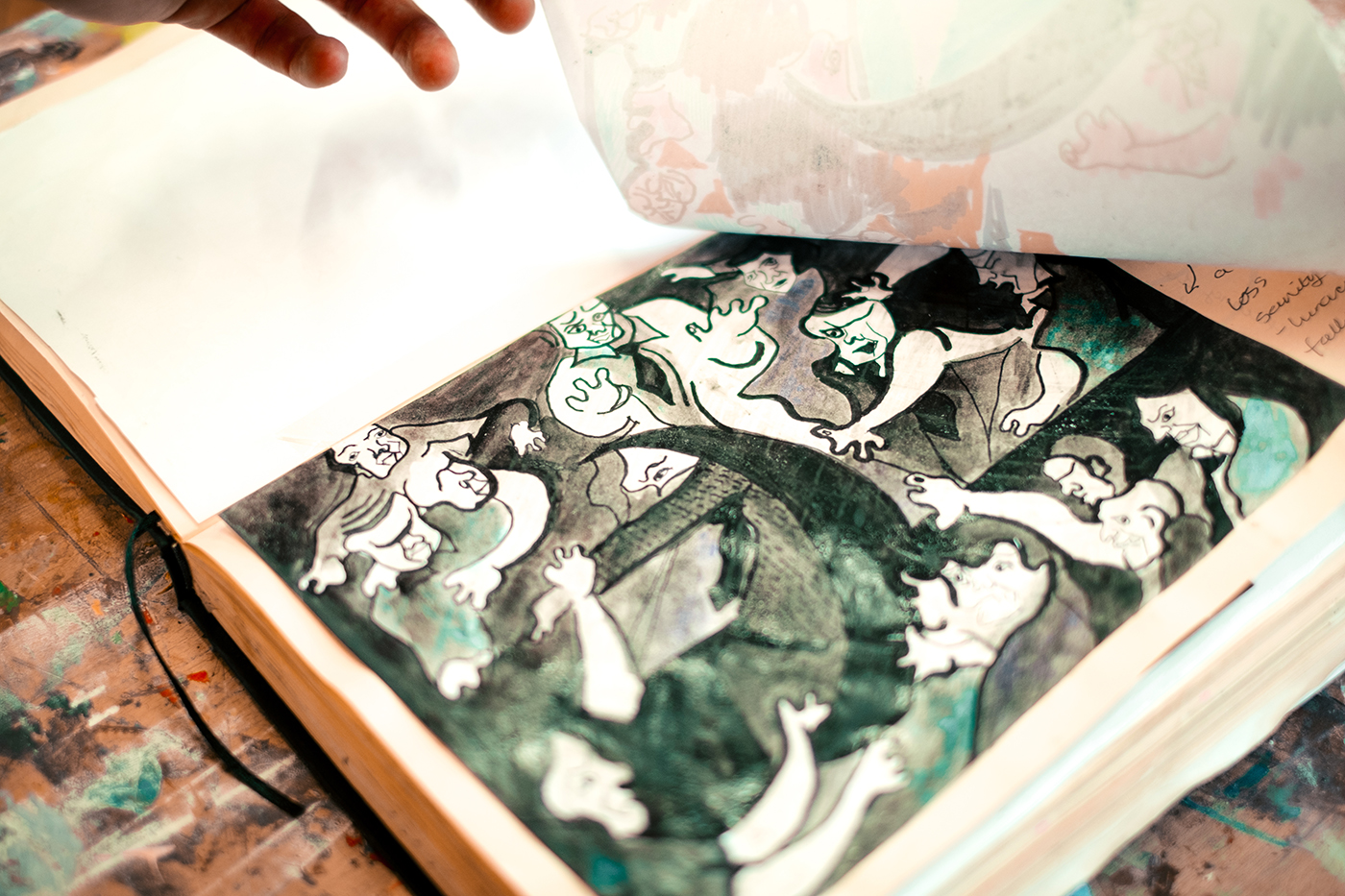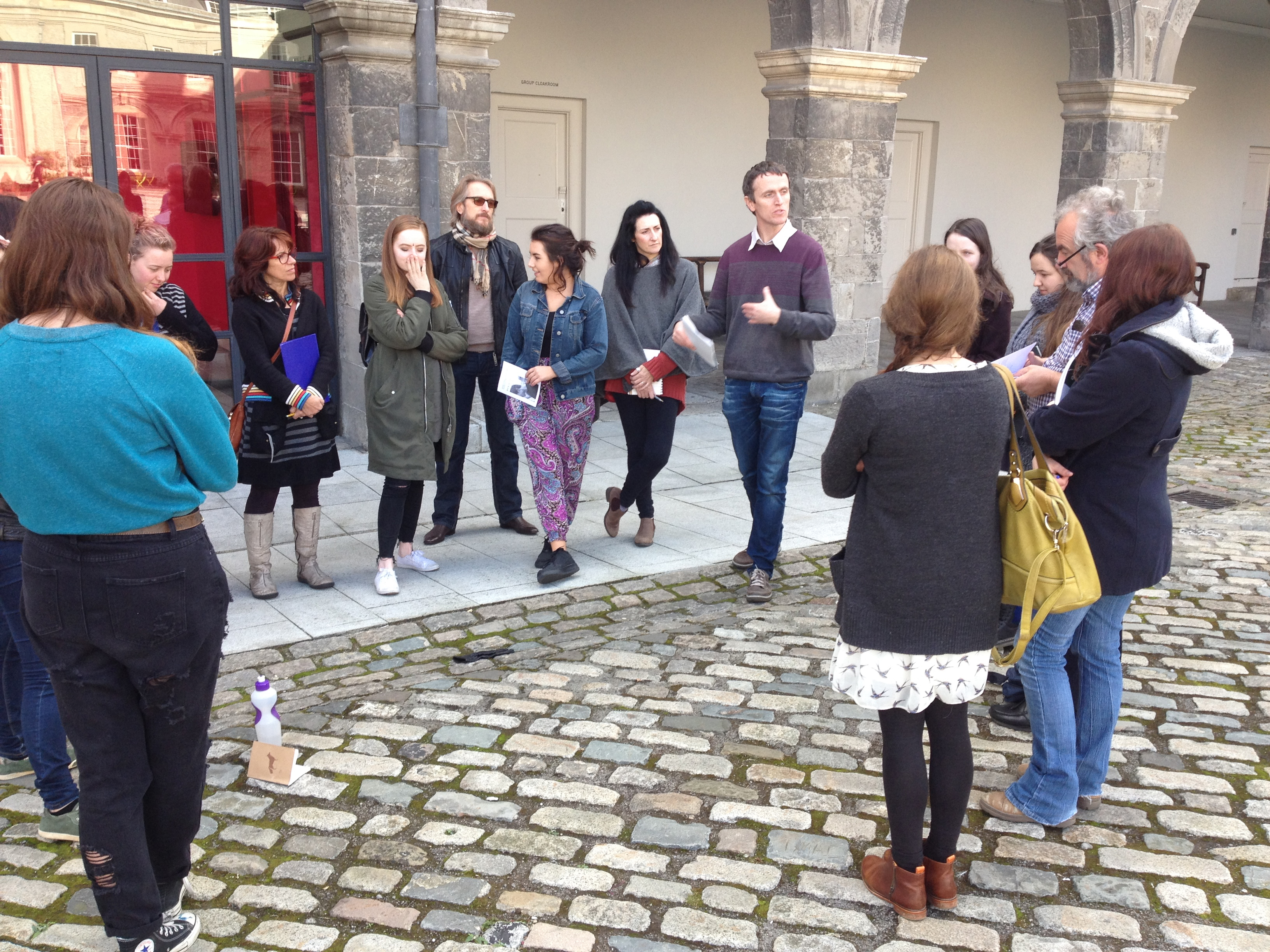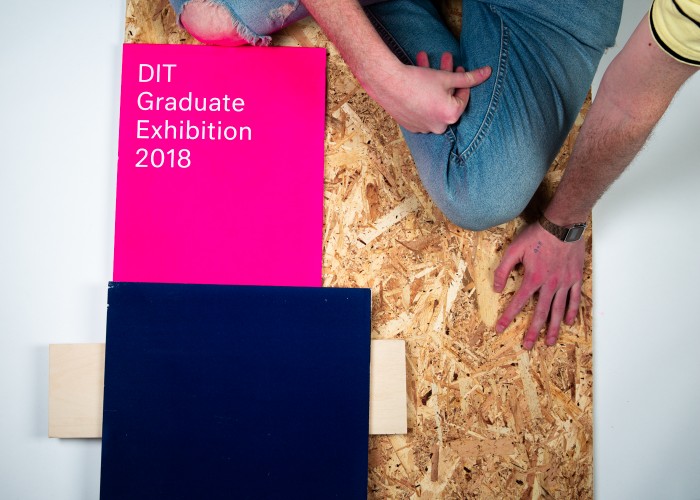Ronan McCrea
Fine ArtPublished May 29 2018
Things We Do. Questions We Ask.
I
We are gathered together in a loose circle in the courtyard of the museum. It is 2015 and the current Fine Art graduating class are in their second year of study. We have coalesced following an incident a moment before, where one of us had picked up a single leather glove lying on the cobblestones and delivered it to the reception desk as lost property. The receptionist clarified that the glove is not in fact, lost property, but an artwork by Lucy Andrews, Untitled (2015) commissioned as part of the group exhibition What We Call Love: From Surrealism to Now at Irish Museum of Modern Art. The glove is tentatively replaced on the cobblestones, theatrically adjusted and re-adjusted in acknowledgement of its newly (re)discovered status as an art-object. A full-scale and heated debate ensues on ideas of value, institutional context, the readymade, gesture, artistic labour, intention, love and loss.
II
What is contemporary art? How do we talk about it? What can art do? Does art exist only within an institutional context? When is art not art? What other contexts can we imagine? What are the skills required of a contemporary artist? Am I learning those skills? Can anyone be an artist?
Are my skills useful for other things? Is art good for you, or good for society? Does art have to be beautiful? How do artists do research? What’s new in art and technology? What is our relationship to other art, and the art that went before? How does gender inequality work in the art-world? How do my life experiences affect my art? How do artists make a living? What does a curator do? Are exhibitions a medium?
How is art meaningful today? What is materiality? How can art represent the issues in the world that I care about? What am I learning from my peers? What does it mean to be critical?
Can art make a difference?
III
Fine Art at DIT has a definitive ethos. We are committed to a shared studio culture; we believe in dialogical team teaching and peer learning; we have a cross-disciplinary structure without separate departments of painting, sculpture, printmaking etc; we support the diversity and individuality of student’s artistic interests and positions; our teaching staff are active artists, scholars and researchers; we engage with the city and wider artistic and cultural contexts.
The overall goal of the course is to facilitate the development of creative and intellectual skills, self-reliance and critical thinking through the specifics of contemporary art. For the first three semesters in studios and workshops, students engage in a number of intensive experimental ‘blocks’ that include painting, sculpture, printmaking, new media, photography and drawing, understood in an expanded sense. Through the first three years, students also take modules engaged with art history and theory, visual and cultural theory as well as modules in professional practice. From halfway through second year, students are supported to develop their own independent artistic practices. There are also opportunities for student exchanges in Europe through the Erasmus scheme. Throughout the four years, the programme is delivered through seminars, lectures, workshops, individual tutorials, group critiques, student presentations, visiting speakers, field trips, and student exhibitions. In fourth year students write a substantial thesis dissertation based on their own research interests and in the studio they bring together the diverse elements of their education to date to elaborate a body of work in relation to their own concerns, interests and research.
IV
There are seventeen graduates in the 2018 exhibition. Our studio spaces and classrooms are adapted from the Victorian asylum and psychiatric hospital buildings of Grangegorman - we adapt them again to make our exhibition of provisional white cubes and black boxes. The aim of the exhibition is for graduates to present themselves as professional artists and test their ideas in the public arena.



